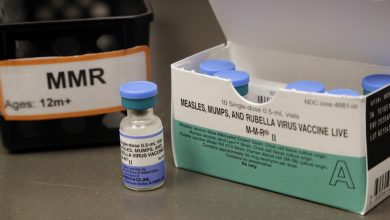Australian Scientists Just Caught Bacteria Using a Never-Before-Seen Trick to Avoid Antibiotics
علماء أستراليون يكتشفون بكتيريا تستخدم خدعة غير مسبوقة لتجنب المضادات الحيوية
Agencies
Canberra: Researchers have just caught bacteria sidestepping antibiotic treatment with a never-before-seen trick.
Bacteria’s troublesome talent for developing resistance against antibiotics is a rapidly growing health threat. This ability has ancient origins and allows drug-resistant bacterial infections like MRSA and gonorrhea to kill 1.3 million people globally each year.
These superbugs are even finding their way into wild animals, such as dolphins and bears.
The shifty microbes can steal genes from each other, quickly passing on antibiotic-resistant tactics: Strategies include directly inactivating the antibiotics, preventing antibiotics from accumulating in their systems, or changing the antibiotic’s targets so that the drugs are no longer effective.
Thanks in part to antibiotic overuse, superbugs have been accumulating multiple resistant tactics, making them extremely difficult to treat.
“This new form of resistance is undetectable under conditions routinely used in pathology laboratories, making it very hard for clinicians to prescribe antibiotics that will effectively treat the infection, potentially leading to very poor outcomes and even premature death,” explains Telethon Kids Institute infectious disease researcher Timothy Barnett.
Telethon Kids Institute microbiologist Kalindu Rodrigo and colleagues discovered this new mechanism while investigating how Group A Streptococcus responds to antibiotics.
This bacteria commonly cause sore throats and skin infections, but it can also lead to systemic infections like scarlet fever and toxic shock syndrome.
“Bacteria need to make their own folates to grow and, in turn, cause disease. Some antibiotics work by blocking this folate production to stop bacteria growing and treat the infection,” explains Barnett.
“When looking at an antibiotic commonly prescribed to treat Group A Strep skin infections, we found a mechanism of resistance where, for the first time ever, the bacteria demonstrated the ability to take folates directly from its human host when blocked from producing their own.”
So Streptococcus has been acquiring already processed folate from outside its own cells; these molecules are abundant in our bodies.
The process completely bypasses the action of sulfamethoxazole, an antibiotic that inhibits folate synthesis within the bacteria, thus rendering the drug ineffective.
Rodrigo and the team identified at least one gene involved: thfT. It encodes part of the folate harvesting system, not unlike our own, as we also can’t produce folate and must get it from our food.
Streptococcus bacteria with this gene, therefore, have found a way to suck up folate and subvert sulfamethoxazole.
In the lab, Group A Streptococcus does succumb to sulfamethoxazole antibiotics because it doesn’t have another accessible source of folate.
In this case, the bacteria are only resistant to the antibiotics when they’re causing an actual infection inside our bodies. This means there’s no easy way of detecting this antibiotic resistance in pathology labs yet.
“Unfortunately, we suspect this is just the tip of the iceberg – we have identified this mechanism in Group A Strep, but it’s likely it will be a broader issue across other bacterial pathogens,” says Barnett.
Understanding these mechanisms is the first step towards being able to test for them and counter them by prescribing other classes of antibiotics instead.
“It is vital we stay one step ahead of the challenges of antimicrobial resistance and, as researchers, we should continue to explore how resistance develops in pathogens and design rapid accurate diagnostic methods and therapeutics,” urges Rodrigo.
قنا
كانبرا: اكتشف علماء أستراليون نوعا من البكتيريا، يتجنب العلاج بالمضادات الحيوية، حيث تستخدم خلال مقاومتها العلاج، خدعة، لم يسبق لها مثيل لتجنب المضادات الحيوية.
وتعمل البكتيريا على تعطيل المضادات الحيوية بشكل مباشر، أو منع المضادات الحيوية من التراكم في أنظمتها.
واكتشف كاليندو رودريغو عالم الأحياء الدقيقة في معهد /تيليثون/ للأطفال بأستراليا، وزملاؤه، هذه الآلية الجديدة أثناء التحقيق في كيفية استجابة المكورات العقدية من المجموعة /أ/ للمضادات الحيوية.
وأوضح الباحثون أن البكتيريا تحتاج إلى صنع حمض الفوليك الخاص بها لتنمو، وبالتالي تسبب المرض، وتعمل بعض المضادات الحيوية عن طريق منع إنتاج حمض الفوليك لوقف نمو البكتيريا وعلاج العدوى، وتوصلوا خلال هذه التجربة إلى أن البكتيريا باتت تعمل على الحصول على حمض الفوليك مباشرة من مضيفها البشري بدل إنتاجه، وهي آلية مقاومة منها غير مسبوقة، وبذلك تقاوم البكتيريا عمل /سلفاميثوكسازول/، وهو مضاد حيوي يمنع تخليق حمض الفوليك داخل البكتيريا، مما يجعل الدواء غير فعال.
وتشير النتائج إلى أن مقاومة المضادات الحيوية أكثر تنوعا بكثير مما أدركه الباحثون سابقا، وتؤكد على الحاجة إلى إنشاء علاجات أكثر تنوعا ضد البكتيريا، حيث يعتقد الباحثون فهم آلية البكتيريا وتخلصها من المضادات الحيوية خطوة أولى نحو إنتاج مضادات قادرة على القضاء عليها مستقبلا.




